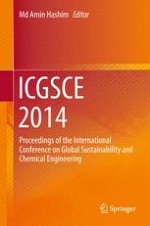This book includes selected papers from the ICGSCE 2014 with focus on the current trends of global resources used to meet the growing demands to improve life style coupled with environmental and social problems related to the resource consumption with emphasize to move towards sustainable development. It provides a platform for scientists and academicians from local and international universities and industries to promote, share and discuss various new issues and developments in different areas of Chemical Engineering with respect to global sustainability. Under the sustainability umbrella the topics covered are; alternative energy sources, alternative feedstock for energy and chemicals, alternative raw materials for household commodity, green process with minimal environmental impact, process intensification, waste minimization, recycling of wastes and providing quality water, food and medicines. Other topics covered include:
1. Oil and gas, Biofuel, Fuel cell, Renewable energy
2. Green technology, Sustainability, Environmental, Carbon sequestration, Carbon footprint, Natural resources
3. Chemical processes, Separation technology, Biotechnology, Nanotechnology, Food technology, Particle technology, Corrosion, Pharmaceutical, Phytochemical, Oleochemical
4. Process modeling, Process Simulation, Process control
5. Advanced material, Polymer, Catalyst, Enzyme
6. Policy, Regulations, Strategy and implementation, Safety, Management of science, Engineering education
7. Process Safety and Loss Prevention, Environmental and chemical risk assessment, Transportation risk analysis, Inherent safety.
